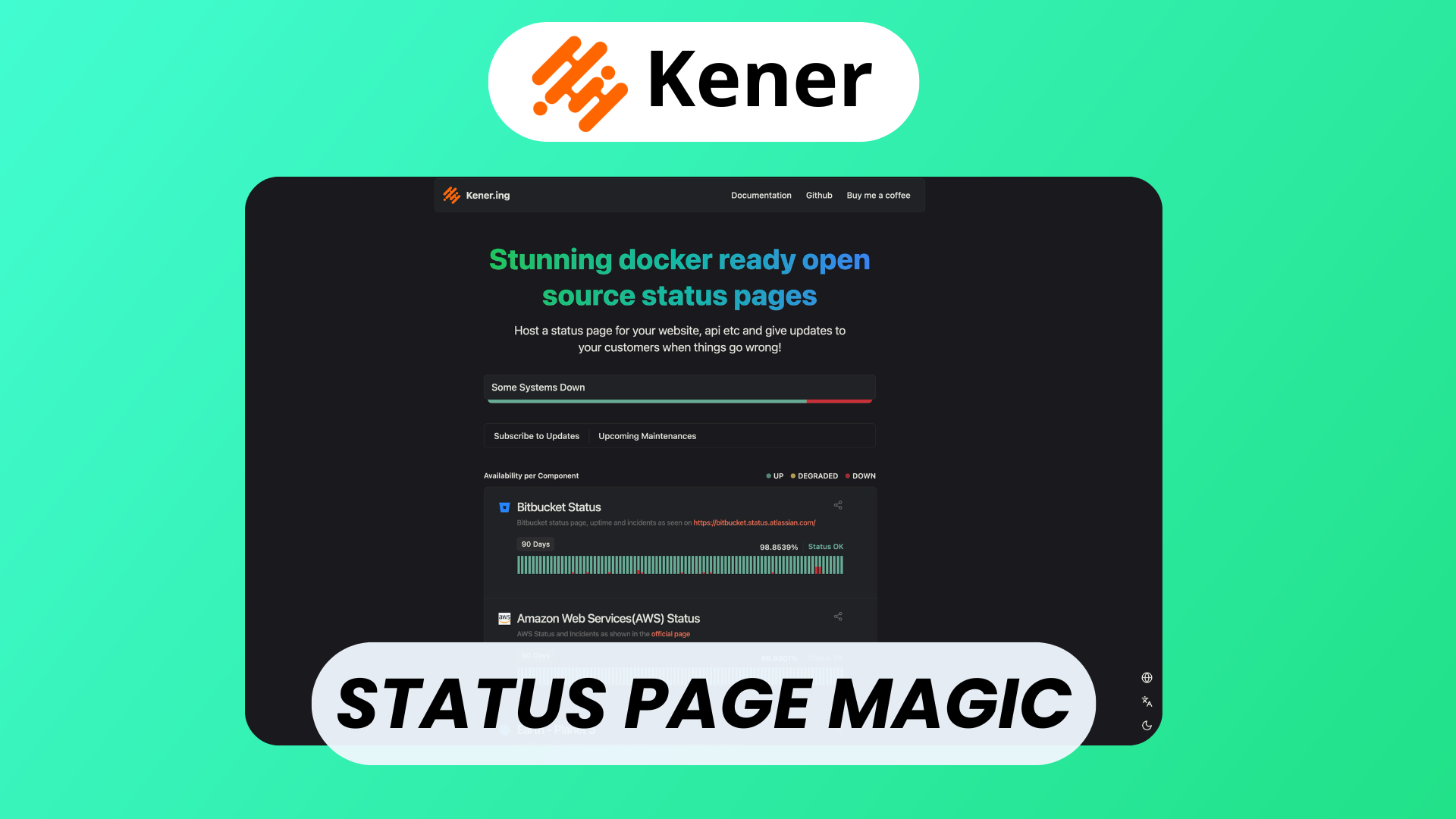Kener: Free Open Source Status Page Builder

Downtime and performance issues are unavoidable, but how you communicate them makes all the difference. That’s where a status page comes in—it provides transparency, builds trust, and reduces unnecessary support tickets.
Kener is a free, open-source status page builder designed to give teams complete control over their incident communication without relying on costly SaaS solutions. Whether you’re a startup, a growing SaaS company, or an enterprise looking for more flexibility, Kener helps you manage uptime reporting and incident communication effectively.
Watch our platform overview on our YouTube channel
Status Page Configuration
Kener makes it simple to set up your first status page. After installation, you can configure your status page with a name, custom domain, and services you want to track. Each service can be categorized into components (e.g., API, Dashboard, Authentication), making it easy for users to see at a glance which part of your infrastructure is healthy. You can also choose between public or private visibility depending on your audience.
Monitors
At the core of any status page are monitors—the checks that continuously test your services. Kener allows you to configure monitors for HTTP, TCP, ICMP (ping), or custom endpoints. Each monitor can be set with flexible intervals, timeouts, and retry attempts to ensure accurate uptime tracking. With this in place, your team and your users get a real-time view of system health.
Triggers & Alerts
A status page is only useful if issues are detected in time. Kener supports triggers and alerts so you can define thresholds (such as failed checks or high latency) that automatically raise incidents. Alerts can be sent through multiple channels—like email, Slack, or other integrations—so your team is notified immediately. This proactive approach helps minimize downtime and keeps your users informed without delay.
Events (Incidents & Maintenance)
Kener makes it easy to publish events, whether they’re unexpected outages or scheduled maintenance. Each event can include updates, impact levels, and estimated resolution times. Users can subscribe to event notifications, ensuring that your communication is always transparent. Incidents stay on your history timeline, helping you demonstrate accountability and build user trust.
Theme & Customization
Your status page should feel like a part of your brand, not a generic tool. Kener allows full theme customization, from logos and brand colors to typography and layout adjustments. This way, you can provide a seamless, branded experience that matches your product. You can also add custom text, such as SLA details or support links, to give users the information they need.
Embed Badges
A unique feature of Kener is its embed badges. These lightweight status indicators can be embedded into your website, documentation, or dashboard. For example, you can place a badge that shows “All Systems Operational” directly in your product, giving users real-time confidence without forcing them to visit a separate status page.
Team Management
Managing uptime is a team effort. Kener includes team management features, allowing you to invite members, assign roles, and set permissions. Admins can configure monitors and alerts, while support staff can post incident updates—all without stepping on each other’s toes. This collaborative workflow ensures efficient communication during critical events.
Conclusion
Kener provides everything you need to run a professional, branded, and reliable status page—without being tied to expensive third-party solutions. With open-source flexibility, robust monitoring, real-time alerts, and easy customization, it empowers teams to keep their users informed and their operations transparent. If you’re looking for a free, open-source way to manage incidents and communicate uptime, Kener is a powerful choice worth exploring.

